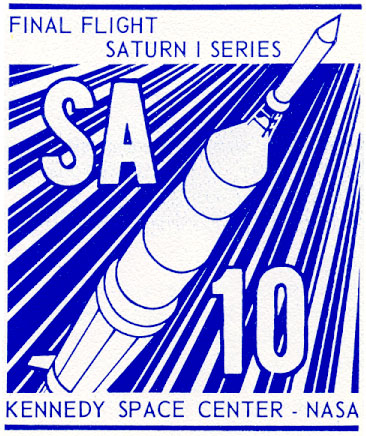Beginning in 1961 NASA began qualifying the cluster concept with the Saturn I rocket. Over a series of ten Saturn Apollo (SA) launches, Werner von Braun and his team from Marshall flew four Block I and six Block II birds.
All were successful with the final three placing into orbit satellites as part of Project Pegasus. Micrometeorite strikes during the Apollo program could lead to catastrophe so Pegasus was launched to evaluate the potential risk. The final Pegasus would fly on the final Saturn I, SA-10.


While the correct color is blue the purple “trial” color has the same characteristics as the ONC. In contrast, the magenta cachet lacks the dot and the wavy lines seen to the right of the number 10. The fact that it is found with a Cape Canaveral hand cancel makes it all the more suspicious. 
Commercial rubber stamps were created for inexpensive events like AP-14, AP-15, and Skylab. Although there were more SA-10 impressions produced than GT-VII, SA-10 remains and elusive (and expensive) cover. Perhaps since the Gemini flight was manned there may have been a higher percentage retained by collectors. It would have been interesting to know how many were struck for the philatelic market.


